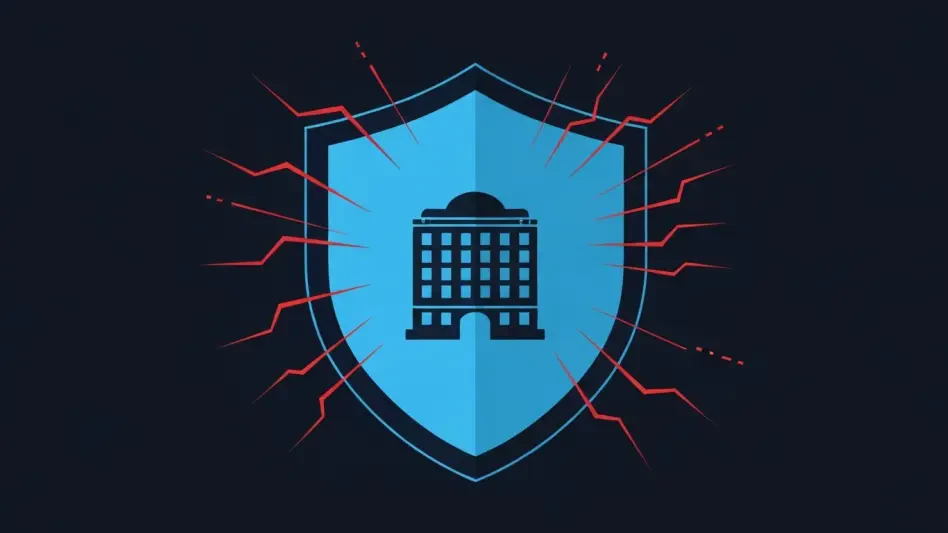In an era where cyber threats loom larger than ever, the telecommunications sector stands at a critical juncture with the Federal Communications Commission’s (FCC) recent decision to eliminate mandatory cybersecurity rules for telecom firms, reshaping how critical communications infrastructure is secured. This pivotal move, which scraps enforced standards under the 1994 Communications Assistance for Law Enforcement Act (CALEA), comes at a time when nation-state attacks like China’s Salt Typhoon espionage campaign have exposed glaring vulnerabilities, raising the stakes for national security and consumer trust. This analysis aims to dissect the market implications of this deregulation, exploring how it influences telecom companies, shapes cybersecurity trends, and alters the balance between government oversight and industry autonomy.
The significance of this shift cannot be understated, as telecom networks underpin everything from personal connectivity to emergency response systems. Understanding the market dynamics at play—ranging from cost implications to competitive pressures—offers vital insights for stakeholders navigating this new terrain. This examination will delve into current trends, project future developments, and assess the broader impact on the telecom sector’s cybersecurity posture.
Dissecting Market Trends and Projections in Telecom Cybersecurity
Regulatory Rollback: A Catalyst for Industry-Driven Security
The FCC’s 2-1 vote to abandon mandatory cybersecurity standards has introduced a significant pivot toward self-regulation within the telecom market. Proponents, including FCC Chairman Brendan Carr, argue that the industry has already shown substantial progress in fortifying networks, particularly after high-profile breaches like Salt Typhoon revealed systemic weaknesses. Voluntary measures such as accelerated vulnerability patching and enhanced threat detection are now positioned as the cornerstone of security efforts. For telecom firms, this deregulation translates to reduced compliance costs and greater operational flexibility, potentially freeing up capital for innovation in areas like 5G deployment or network expansion.
However, this shift also brings market uncertainty, as the absence of enforceable standards may lead to uneven adoption of best practices across the sector. Larger players with robust resources might maintain high security levels to protect brand reputation, while smaller firms could lag due to budget constraints. Market analysts observe that this disparity could create a tiered security landscape, where competitive advantage hinges on perceived trustworthiness rather than mandated benchmarks. Over the next few years, from 2025 to 2027, the industry might see a surge in third-party cybersecurity services as firms seek to bridge internal gaps without regulatory pressure.
Rising Cyber Threats and Market Vulnerabilities
Amid this regulatory rollback, the telecom market faces an escalating threat environment that could reshape investment priorities. State-sponsored cyber operations, exemplified by breaches that have compromised sensitive data, underscore the critical need for robust defenses. The market response has been mixed—while some companies are doubling down on advanced technologies like AI-driven threat detection, others remain cautious about upfront costs without guaranteed returns. Data suggests that cybersecurity spending in telecom is projected to grow at a compound annual rate of 8-10% through 2027, driven by the need to counter sophisticated attacks that exploit interconnected global networks.
A notable trend is the increasing interdependence of domestic and international telecom systems, which amplifies risks from less secure foreign infrastructures. This global exposure could pressure U.S. firms to adopt stringent voluntary standards to mitigate cross-border vulnerabilities, even in the absence of mandates. Additionally, consumer demand for transparency regarding data protection practices is rising, potentially influencing market share as subscribers gravitate toward providers with proven security track records. The challenge lies in balancing these investments against shareholder expectations for profitability.
Competitive Dynamics and Strategic Responses
The deregulation of cybersecurity rules is also reshaping competitive dynamics within the telecom sector, creating both opportunities and risks. Industry leaders have welcomed the FCC’s decision, citing that previous mandates were overly burdensome and redundant given recent self-initiated improvements. This perspective suggests a market trend toward collaborative frameworks, where firms partner with government agencies for threat intelligence sharing without the weight of legal obligations. Such partnerships could foster innovation in security protocols, positioning proactive companies as market frontrunners.
Conversely, the lack of uniform standards might erode consumer confidence if a major breach occurs under this voluntary regime, disproportionately affecting smaller or less-prepared firms. Market projections indicate that mergers and acquisitions could accelerate as larger entities seek to absorb smaller players struggling with security investments, consolidating the sector over the coming years. Furthermore, the emphasis on voluntary measures may spur a niche market for cybersecurity certifications, allowing firms to differentiate themselves through independently verified standards. This evolving landscape demands strategic agility from telecom players to navigate reputational and operational risks.
Reflecting on Market Impacts and Strategic Pathways Forward
Looking back, the FCC’s decision to eliminate mandatory cybersecurity rules for telecom firms marked a defining moment that shifted the burden of security squarely onto industry shoulders. The analysis revealed a complex interplay of reduced regulatory costs, heightened cyber risks, and uneven competitive pressures that characterized the market response. While voluntary efforts showed promise in fostering innovation, the persistent threat of sophisticated attacks and potential disparities in security adoption painted a picture of cautious optimism.
Moving ahead, telecom companies need to prioritize strategic investments in cutting-edge security technologies and cross-industry collaborations to mitigate risks effectively. Establishing voluntary yet rigorous industry benchmarks could serve as a powerful tool to maintain consumer trust and deter future breaches. For policymakers, the lesson is to consider hybrid models that blend incentives with targeted oversight, ensuring a safety net without stifling market growth. Ultimately, the path forward demands a collective commitment to resilience, recognizing that in an interconnected digital world, safeguarding telecom infrastructure remains paramount to national and economic stability.








